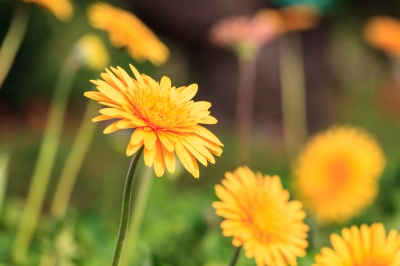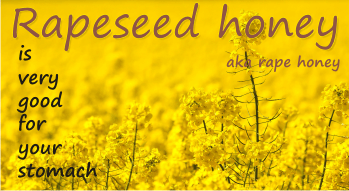Let’s make dandelion honey. It’s April and I’m sure you have run out of honey. It is possible, I know. Last year was not a very productive honey year. The taste was amazing, but the quantity… way too small.
What is dandelion honey good for? First, it is delicious. Then, the dandelions are highly therapeutic. Their main effects are to detoxify the liver and clean the blood.
There is nothing wrong in not eating honey all the time. Dandelion honey is one amazing substitute during spring.
Make your own dandelion honey!
Dandelion honey is actually dandelion syrup (our elders call it like that). We humans, cannot even come close to making any type of honey that is similar to the honey bees honey. But it resembles in consistency, color and some therapeutic benefits. Perhaps if there were larger planes with dandelions we could also have some real honey.
Dandelion is a plant with exceptional therapeutic qualities and should not fail from the spring therapy of each person. Its main function is that of blood-and-liver cleanser and detoxifier. It is used in herbal treatments in various forms:
Probably one the best books that opened the door of therapy with dandelion, for the West. Published in 1999, the book gathers lots of dandelion herbal remedies in the form of teas, tinctures, tonics, ointments, massage oil, skin oil, and moisturizer – all simple and fun to make at home.
Don’t Weed ‘Em, Eat ‘Em!
Infusion:
– Add 2 teaspoons of dried plant in 250 ml boiled water. Let it infuse for 10 to 15 minutes, drink 2-3 cups of this slightly bitter tea, after the main meals, for 4-6 weeks.
Therapeutic effects:
Purifies the blood, jaundice, cholecystitis, biliary dyskinesia, normalize blood circulation, atherosclerosis, rheumatism, gout, chronic urinary tract, heals varicose veins and ulcers, and remove toxins from the body.
Decoction:
– In 1 liter of cold water add 30 to 50 grams of roots and fresh leaves. Leave them to soak overnight. The next morning boil them for 10 minutes, take them off the heat and let infuse for 4 hours. Strain and drink 2 cups of tea sweetened with honey, per day. The first cup with 30 minutes before breakfast and the second cup one hour after breakfast.
Therapeutic effects:
Helps with any kidney disease, liver failure, digestive disorders, dyspepsia, catarrhal jaundice and internal bleeding.
Raw eating
– Gather 5 or 8 fresh dandelion stalks Strains, chew them well and then swallow them, on an emply stomach, for 2 to 4 weeks.
Therapeutic effects:
Rapid improvement of rheumatic pain and glandular and hepatic inflammation; stimulates gallbladder function by stimulating dissolving and removing gallstones, combats biliary dyskinesia, hyperacidic gastritis, atherosclerosis, gout, blood purification, spleen disorders, avoids fatigue and lack of energy. Asthenic and tired people will have a sense of the vitality of the body, from the early days.
Dandelion syrup
For this syrup you need:
– 300 g of dandelion flowers
– 1 liter of water
– 900 g sugar (brown – at your choice)
– 1/2 lemon juice (or the whole one, if you like it with a slightly sour taste)
How it’s done:
· Gather the flowers, preferably in the morning, shake them well by your hand to remove the little insects, and place them in cold water. Leave them there for 5 minutes, so all the bugs go away. Wash them under the water jet and put them in a cooking pot.
· Add the water.
· Place the pot on a low heat and bring almost to the boiling point. Don’t let it boil, take it off the heat and let it infuse over night. Make sure all flowers are under water, and for this you can pun a plate on them. I use a glass one, as seen in the picture.
· The following day strain and squeeze all the liquid. I use the bag I have for straining our nuts or seeds milk.
· Place the pot with the juice (not the flowers!) on the lowest heat. Add the sugar and the lemon and let the pot uncovered. It will boil slowly, without destroying the vitamins. Keep it there till it reaches the desired consistency. If you want to drink it with water, it should be more liquid, if you want to use it on waffles or pancakes, then it should be more thicker.
· Turn off the heat and place the syrup in small bottles. If you don’t have too much, then you can simply place the bottles in the fridge. If you have a larger quantity of syrup, and not so much spare place in the fridge, then you must sterilize the bottles before.
· Sterilizing the bottles:
Wash and rinse the bottles very well. Place them (not the caps, as they have a rubber seal on the inside that could melt) on a metal tray and place it in the oven (cold, not pre-heated). Keep the bottles there for 30 minutes at 170°C (338°F). Turn off the heat and let them cool a little inside the oven, with the door opened.
Pour the syrup in the bottles (be careful, it’s very hot), cap them and place them again in the oven, at 100°C (212°F) for 60 minutes. Then turn off the heat and let the bottles cool down in there for the night. Label them.
Place the bottles in a cool, dark place. They will be just fine for more than a year. No preservatives needed.
Therapeutic effects:
The syrup detoxifies the liver and it’s blood depurative.
I personally use it as syrup to make delicious drinks. I use 1 part syrup and 6 parts water. The taste is different, but pleasant and after one glass all you know is that you want more. 🙂
Our elders say there is a reason for all the flowers. They have a certain color, and blossoms at a specific time of the year, according to the needs of our body. Nothing is at random.
Dandelions come in spring, gather the yellow heat of the sun and clean our body from the toxins accumulated over winter. It’s their purpose.
Any medical studies?
• Published on Feb 2012, the study Efficient Induction of Extrinsic Cell Death by Dandelion Root Extract in Human Chronic Myelomonocytic Leukemia (CMML) Cells, by Pamela Ovadje et al, concludes: “The results from this study indicate that Dandelion Root Extract (DRE) is able to efficiently and selectively induce apoptosis and autophagy in these cell lines in a dose and time dependent manner, with no significant toxicity on non-cancerous peripheral blood mononuclear cells.”
The results from this study indicate that natural products, in particular Dandelion Root Extract, have great potential, as non-toxic and effective alternatives to conventional modes of chemotherapy available today.
The study was made due to the story of 2 leukemia patients from the Windsor Regional Hospital, who suffered from myelomonocytic leukemia, a highly aggressive and resistant form of leukemia. The patients self-administered a natural therapy consisting of dandelion tea. Test results of both patients improved while taking dandelion tea and both refused further courses of chemotherapy.
Dandelion root extracts are available as dietary supplements at health food stores and online health retailers. You can find them at Amazon (click on the pictures below), if you cannot locally. Even as already made supplements.
Starting from here, a team of researchers collected leukemia blood 
“It was reported that in the presence of the dandelion root extract, the leukemia cells effectively committed suicide within 24 hours. It killed the cells very selectively; it only killed the cancer cells. The regular cells were not killed.”
• In 2008, the International Journal of Oncology published the results of a clinical study showing the positive effects of dandelion tea in decreasing breast cancer cells. Researchers tested dandelion tea on prostate cancer cells and found similar results.
• In 2011, the findings on prostate cancer were corroborated by a report published by the International Journal of Oncology, which shows that a dietary supplement containing dandelion as one ingredient suppresses the growth of prostate cancer cells.
• Dandelion root extract was clinically proven to specifically induce apoptosis in chemo-resistant melanoma (a type of skin cancer)—without toxicity to healthy cells.
• These extracts have also been shown to be active against pancreatic cancer cells and colon cancer cells (in vitro, not in humans). There are presently applications for clinical approval to begin trials in humans.
Side effects?
Certainly one recommendation of the dandelion as medicine is the fact that side effects are very rare. When the rare symptom does occur, it tends to come in the form of mild gastrointestinal upset, contact dermatitis, or diarrhea. (according to medicaldaily.com)
What does folk medicine tell?
• Native American cultures, including the Iroquois, Ojibwe, and Rappahannock, prepare the root with herbs to treat kidney disease, upset stomach, and heartburn.
• Traditional Arabian medicine, use dandelions as a treatment for those illnesses that originate in the liver and the spleen.
• Regarded as a detoxifying herb in the East, traditional Chinese medicine (TCM) combines the dandelion with other herbs for ailments ranging from digestive disorders to serious complications, including uterine, breast, and lung tumors. TCM also uses the dandelion to enhance the immune response during upper respiratory tract infections, bronchitis, and pneumonia.
•Europeans commonly use dandelions in salad and frequently brew tea with the root. They identify the plant as a natural cure for gastrointestinal ailments, including upset stomach and loss of appetite.
European Scientific Cooperative on Phytotherapy (ESCOP) recommend the root and leaves of the plant to restore liver function, general detoxification,and to reduce side effects from any medications that are metabolized by the liver.
Are you healthy? Don’t care about health benefits? Eat it anyway!
Remember that every part of the dandelion is edible. And for this reason it can be successfully inserted into our food. Here is a book full of recipes: The Ultimate Dandelion Cookbook
.
– Dandelion can be used in salad, quiche, lasagna and other pasta dishes, and many other familiar and less-familiar dishes.
– The honey-like flowers are a healthy and tasty addition to bread, omelets, pancakes, dandelion tea, and more – plus they make delectable dandelion wine and jelly.
– The buds are often pickled or added to stir fries and other dishes.
– The stems can be eaten like noodles.
– And the roots add coffee flavor to everything from ice cream and cakes to drinks.
I prefer dandelion ‘honey’. It has an excellent flavor on waffles and pancakes. Try it and let me know.
If you happen to find dandelion honey for sale, don’t hesitate and buy it. It has a specific taste and it really has a lot of health benefits. Starting with reducing the gastric juice from your stomach and helping with your entire digestion, from gall bladder to your intestines. Give it a try. Read more about it in the article: Dandelion honey benefits – another way to naturally reduce gastric acidity.

References:
undergroundhealthreporter.com;
ziarullumina.ro
medicaldaily.com
Dandelion flower picture credit Iain Watson published under CC via flickr.com;
Dandelions Image courtesy of criminalatt at FreeDigitalPhotos.net








I just made my first batch of dandelion jelly. its soooo yummy. simple jelly from flower tea but good stuff.
This article is misleading.The syrup is delicious,but it doesn’t have any medicinal properties.The link that you provided talks about root extract,not flowers,boiled.All the vitamins are destroyed during heating.
Hi Zora,
Yes, the link is about the effects of dandelion root on leukemia. It says so.
Things change, indeed, while boiling a plant. Vitamins – which are in insignificant quantities, will probably vanish away. But the whole story is not about the vitamins (otherwise a bottle of them will suffice) but about the phytonutrients that each plant has. Some of them will even increase their potency with heat. It’s the case of teas. Teas and decoctions have therapeutic value though boiled, and some of them are boiled for a long period of time.
Otherwise, the whole dandelion plant is very healthy, though bitter. If you can, then yes, eat it raw.
Laura
I love this Dandelion syrup! I didn’t however bake mine in the oven afterwards.
First I sterilize the bottles in the oven. But not the lids with their rubber gasket. After the syrup is poured into bottles and lids are on, I put them in the oven at 100 degrees C (212 F) for an overall sterilization. I still have bottles in a perfect state, made 3 years ago.
I make every year and from so many different plants and fruits, that I do have too many of them!
Laura